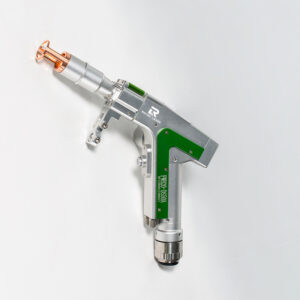Selecting the right laser gun for your specific needs can be challenging given the wide array of options available. However, by carefully considering several key factors, you can ensure that you choose a laser gun that perfectly meets your requirements. Here’s a detailed guide to help you make an informed decision:
1. Determine the Required Functions
The first step in choosing the right laser gun is to identify the functions you need. Laser guns come in various configurations, such as single function, 3-in-1, 4-in-1, and 5-in-1 models. Each type offers different capabilities:
- Single Function Models: Primarily for welding only.
- 3-in-1 Models: Typically combine welding, cutting, and cleaning functions.
- 4-in-1 Models: Add an additional capability like weld bead cleaning.
- 5-in-1 Models: Offer the most comprehensive functionality, including specialized tasks like battery welding.
Choose the model that best suits your specific work requirements.
2. Laser Power Support
When choosing the appropriate laser power, consider the materials you most frequently work with and the maximum thickness you need to weld. Laser guns are available with various power options, typically ranging from 1000W to 3000W. The power you need depends on the thickness and type of materials you will be working with. For instance, a 1500W laser can easily weld 3mm stainless steel. Higher power lasers can handle thicker materials and provide faster processing speeds, but they also come with increased costs and power consumption. Most laser guns on the market today are compatible with 2000W or 3000W fiber lasers. Ensure you select a laser gun with the appropriate power level for your specific applications to achieve optimal results.
Need help, please contact us at sales@raynolaser.com
3. Cooling System
The cooling system is another crucial factor to consider. Laser guns typically come equipped with either air cooling or water chiller cooling systems:
- Air Cooling: Ideal for lower load applications and non-continuous operations. Air-cooled systems are usually smaller, lighter, and simpler to operate. They are perfect for tasks that don’t require extended periods of high-intensity use.
- Water Chiller Cooling: This system is perfect for high-power lasers or applications that demand continuous, high-intensity use. Water-cooled systems offer superior cooling efficiency and stability, making them the preferred choice for most metal processing factories. They ensure consistent performance even under demanding conditions.
Choose the cooling system that best matches your operational needs and working environment to ensure optimal performance and longevity of your laser gun.
4. Working Mode
Decide whether you need a handheld or automated laser gun. Handheld models offer greater flexibility and are ideal for jobs that require mobility and manual control. Automated systems, on the other hand, are perfect for high-volume, repetitive tasks and provide consistent quality with less human intervention. Evaluate the nature of your work to determine which mode is more suitable.
5. Working Stability
Working stability is a critical aspect to ensure consistent performance and quality. Look for laser guns known for their durability and reliable performance under various conditions. Checking user reviews and technical specifications can provide insights into the stability and dependability of different models. You can also consult us for suitable recommendations.
6. After-Sales Support
Robust after-sales support is essential for maintaining your laser gun and addressing any issues that arise. Opt for a manufacturer or supplier that offers comprehensive support services, including installation assistance, maintenance, troubleshooting, and readily available spare parts. Good after-sales support can save you time and money in the long run.
7. Cost
Finally, consider your budget. While it’s important to invest in a high-quality laser gun, you should also ensure that the cost aligns with your financial constraints. Balance the initial purchase price with the potential benefits in terms of efficiency, functionality, and long-term operational savings.
Conclusion
Choosing the right laser gun involves careful consideration of your specific needs and operational requirements. By evaluating the functions you need, the laser power, cooling system, working mode, stability, after-sales support, and cost, you can make a better decision that enhances your productivity and meets your welding, cutting, and cleaning needs effectively. Take the time to assess these factors, and you’ll be well-equipped to choose a laser gun that delivers optimal performance for your applications.




